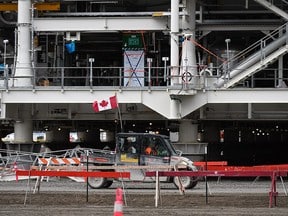Canada’s LNG Industry Set to Launch in 2025

As the new year unfolds, Canadian oil and gas leaders are preparing for significant changes in the industry. With the long-awaited liquefied natural gas (LNG) sector poised to begin operations in 2025, executives are optimistic about the future. However, they are also bracing for potential challenges, including U.S. tariff threats and fluctuating oil prices. This article explores the anticipated developments in Canada’s LNG industry and the broader implications for the oil and gas sector.
Anticipated Growth in LNG Exports
Canada’s LNG industry has been in the making for over a decade. The LNG Canada project, located in Kitimat, British Columbia, is set to export approximately 1.8 billion cubic feet of natural gas per day. This project represents a significant milestone for Canada, which has traditionally relied on the United States as its primary customer for natural gas. Phil Hodge, CEO of Pine Cliff Energy, expressed excitement about the upcoming changes, stating, “This is pretty groundbreaking. We’ve never, ever, had a customer for our natural gas other than the United States.”
The LNG Canada project is expected to start shipping supercooled gas to international markets later in 2025. This development will allow Canada to tap into the lucrative Asian markets, which are among the largest consumers of natural gas globally. A recent survey by BMO Capital Markets indicated that executives in the petroleum sector are optimistic about the new year, despite uncertainties surrounding commodity prices. The survey found that nearly 60% of leaders aim to increase production levels, signaling confidence in the industry’s growth potential.
Mergers and Acquisitions on the Horizon
As the LNG sector prepares for its launch, the Canadian oil and gas industry is also witnessing a wave of mergers and acquisitions. In 2024 alone, the sector recorded $14 billion in M&A activity, highlighting a trend toward consolidation. BMO’s survey revealed that 54% of respondents believe their companies are likely to engage in M&A activity within the next six months. This trend reflects a strategic move by companies to strengthen their positions in a competitive market.
Despite the anticipated growth, executives are also cautious about potential fallout from U.S. tariff threats. Incoming U.S. President Donald Trump has signaled intentions to impose tariffs on Canadian goods, which could impact the energy sector. However, industry players remain focused on the opportunities presented by the LNG Canada project and the diversification of markets. With the Trans Mountain expansion project already shipping Canadian oil to Asia and the U.S., there is a growing sense of optimism about the future of Canadian energy.
The Canadian oil and gas industry is on the brink of significant transformation. The launch of the LNG Canada project in 2025 marks a pivotal moment for the sector, offering new opportunities for growth and market diversification. As companies navigate the challenges ahead, the focus will remain on maximizing production and exploring strategic partnerships to thrive in an evolving landscape.
